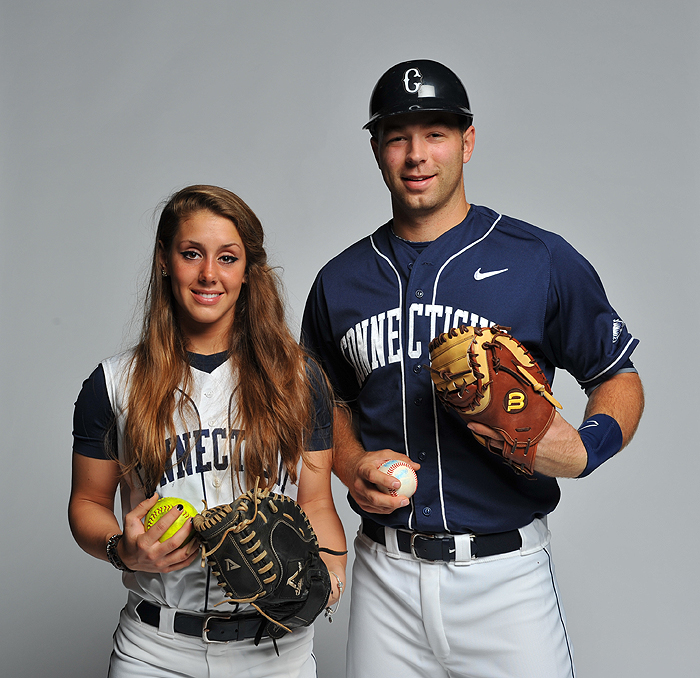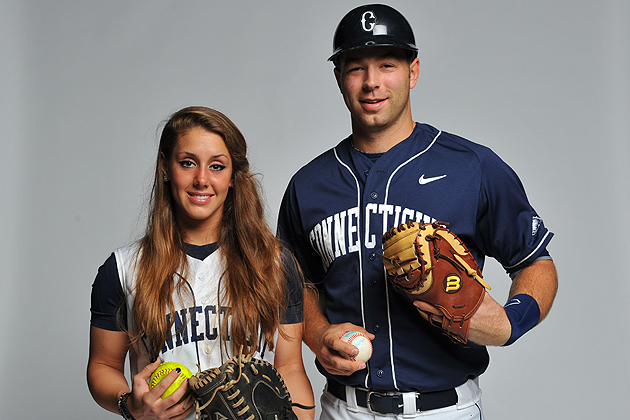
Doug Elliot ’10 (BUS), ’11 MBA was a redshirt senior catcher for the baseball team this past spring. He was drafted in June by the Milwaukee Brewers. Andrea Huelsenbeck ’14 (CLAS) is now a sophomore catcher for the softball team. She previously led Kimberly Academy to two New Jersey state championships. They discuss life behind home plate for the Huskies.
Why did you decide to be a catcher?
Huelsenbeck: It was decided for me. When I was 9, I was the youngest on our travel team. Our catcher got hurt. I was the one on the bench with the strongest arm.
Elliot: It was decided for me, too. My dad [Doug ’82 (BUS)] was a catcher at UConn. It was an easy road to follow.
What are the behind-the-scenes things that most people don’t know about catching?
Huelsenbeck: In order for the pitcher to have a perfect game, the catcher also has to have a perfect game.
Elliot: All pitchers are different. They have tendencies to throw the ball different ways. You’ve got to be in tune with them. It’s very easy to just not catch a ball right, and then it’s a ball instead of a strike.
How much do you get to control what’s going on with the pitcher during the game?
Elliot: Every time I come into the dugout, the coaches ask what he’s looking like. It’s tough for a coach to see [what’s happening], being off at a 90-degree angle. I’m looking straight on and see everything. I always have the freedom to call a pitch.
Huelsenbeck: have less freedom as a freshman. If something goes wrong with your pitching, it’s the other team’s game. I have to calm them down and deal with it between innings with the coaches.
If you were not a catcher, what position would you play?
Huelsenbeck: I was always also a third baseman. I played outfield in a non-conference game this year when we switched it up.
Elliot: First base or third base. I don’t have a lot of speed. In the summer league, I played first base a lot. I haven’t seen the field in college.
Of all the parts of being a catcher, what do you think your best trait is?
Huelsenbeck: Throwing. I’ve always had a good arm.
Elliot: I’ve always been a good defensive catcher. It’s a good excuse to say you don’t hit as good as other people. I’ve always taken pride in catching and calling a good game.
What makes you crazy about being a catcher?
Elliot: I’m not calling out our outfielders, but they show up, take a couple of fly balls and hit the batting cage. Infielders take a couple of balls and throw. Catchers have to work on receiving, blocking [balls], and then you might get to work on your hitting.
Huelsenbeck: I’m going to agree with that. There are some days I don’t even get to hit. Hitting is one of my favorite parts of the game.
Elliot: She’s fortunate to be playing. When I was a freshman, I redshirted, so there were weeks when I didn’t get to hit in batting practice because you’re always catching bullpen with the number of pitchers we have.



